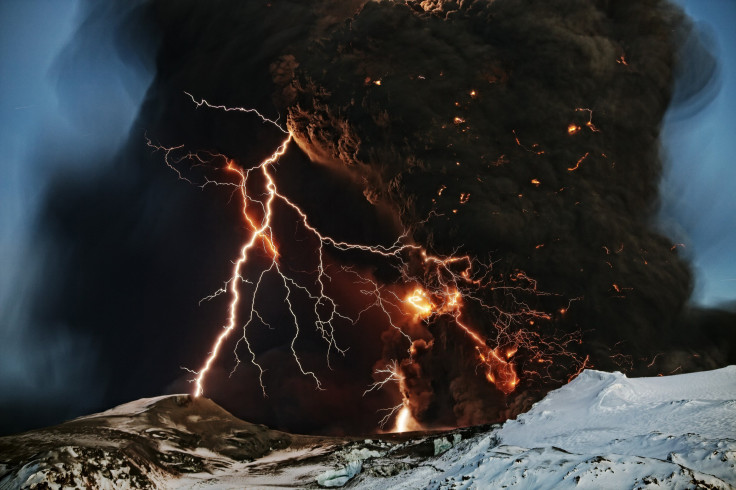Earthquakes At Iceland Volcano May Signal Impending Eruption

A huge volcano in Iceland might be getting ready to blow, just a few years after the area’s last eruption.
Experts have noted recent seismic activity at Bardarbunga (spelled Bárðarbunga in Icelandic) that can indicate an imminent eruption — one that could cloud up the air with gas and ash and potentially affect the rest of Europe.
When volcanoes are getting ready to erupt, scientists will often note small earthquakes or tremors stemming from the ground uplifting, creating more space for underground chambers to fill with the molten rock called magma that would become lava once it reaches the surface. This type of activity is not rare — experts have been recording similar activity at other volcanoes around the world, including the supervolcano Campi Flegrei in Italy, which is next to Naples and is just a few miles away from the infamous Mount Vesuvius that destroyed the ancient Roman city Pompeii in the first century AD. Similar observations have been made at Hawaii’s largest volcano, Mauna Loa, and at the Yellowstone supervolcano.
The Daily Star reports there have been earthquakes at Bardarbunga over the last two years, including during the last weekend, with one volcanologist warning that it could erupt in the coming years.
“The reason for the earthquakes in this place is that the volcano Bardarbunga is inflating, i.e. the pressure of magma in the magma chamber is increasing,” Páll Einarsson, a University of Iceland volcanology expert and geophysicist, told the Daily Star. “The earthquakes last week are just the symptoms of this process, they do not cause the volcano to erupt.”

This stratovolcano is part of a larger volcanic system in the central part of the country and has a crater that descends almost half a mile below the surface, hidden underneath the Vatnajökull glacier. On top, the central volcano forms a peak that is one of the highest points in Iceland, reaching almost 6,600 feet into the air.
The Bardarbunga volcanic system last erupted in late 2014 and early 2015 at its Holuhraun lava field, spitting out molten rock and shooting ash and gases, particularly sulphur dioxide, into the atmosphere. That eruption came after several years of increased seismic activity in the system.
But the activity did not get as much attention as the 2010 eruptions of the southern Iceland volcano Eyjafjallajökull, during which ash and gas shot thousands of feet into the air and spread over Europe enough to ground airplanes.
There is disagreement, however, over whether Bardarbunga will follow Eyjafjallajökull’s lead.
The seismic activity at Bardarbunga might “precede a large explosive eruption and consequent widespread ash fall,” but “it is statistically unlikely to do so,” University College London disaster expert Simon Day told the Daily Star.
And the Icelandic Meteorological Office still has Bardarbunga listed as being in a “normal, non-eruptive state” on its website. The office lists a few dozen volcanoes throughout Iceland, all of them in the same non-eruptive classification except for a couple in the westernmost part of the country that are listed as “appears quiet but is not monitored adequately. Absence of unrest unconfirmed.”
© Copyright IBTimes 2024. All rights reserved.




















